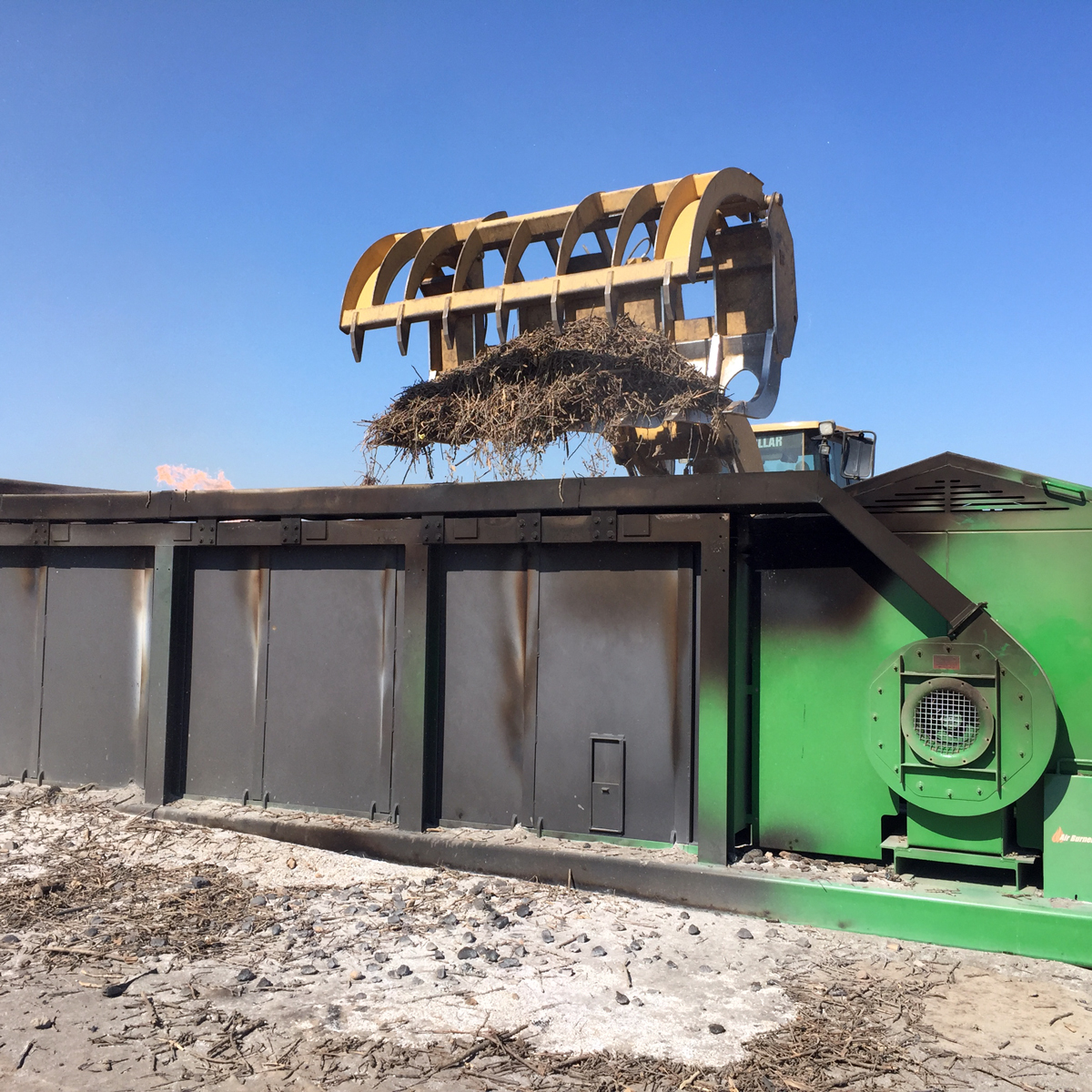The ‘stick’ solution for three Central Valley almond hullers was installation of air curtain burners. These burners are the size of a large roll-off waste container and are also used by CalFire to burn dead trees in the state forests.
Wood waste is loaded into the burner and ignited. A fan at one end of the burner pushes air across the top of the open unit. This air creates a ‘curtain’ that directs the particulate matter from the fire down into the unit. Heavy smoke is decreased and there is the added benefit of reduction of air emissions from multiple trucks hauling waste away.
Roger Isom of Western Agricultural Processors Association said the burners, installed after a prolonged permitting process, were critical to helping almond hullers deal with stick accumulation. Three years worth of harvest waste, previously taken by co-generation plants, was piling up at the Minturn Huller Cooperative in LeGrand when their burner was installed, manager Jeff Hamilton said.
The burner is a great tool to reduce the stick accumulation, but the valley air pollution control district has strict guidelines for use. Hamilton said the burner needs a large set back from other structures. There is also a limit on the amount of debris that can be burned. Hamilton said there is also the challenge of disposing the ash.
Kevin Long of Superior Almond Hulling in Cantua Creek said the air burner installed at the huller last summer would be the first to operate in Fresno County this year. Burning the wood waste onsite is a good alternative to sending a couple hundred truckloads of sticks offsite for disposal, he said. The bio-char generated by the burning may have some use as a soil amendment.
The Cantua Creek burner is a portable unit, Hamilton said, as the facility operators wanted the flexibility to move. Using the burner at another site will require additional permitting, he noted.
Isom and WAPA were instrumental in solving the stick problem, Long said. Staff at the air resources board and Fresno County were also helpful in the permitting process.
Portable burning units still face come permitting challenges, Isom said. Those units would be used in multiple sites for stick disposal and would be limited to burning 100 tons per day.

Cecilia Parsons
Cecilia Parsons has lived in the Central Valley community of Ducor since 1976, covering agriculture for numerous agricultural publications over the years. She has found and nurtured many wonderful and helpful contacts in the ag community, including the UCCE advisors, allowing for news coverage that focuses on the basics of food production.
She is always on the search for new ag topics that can help growers and processors in the San Joaquin Valley improve their bottom line.
In her free time, Cecilia rides her horse, Holly in ranch versatility shows and raises registered Shetland sheep which she exhibits at county and state fairs during the summer.
















